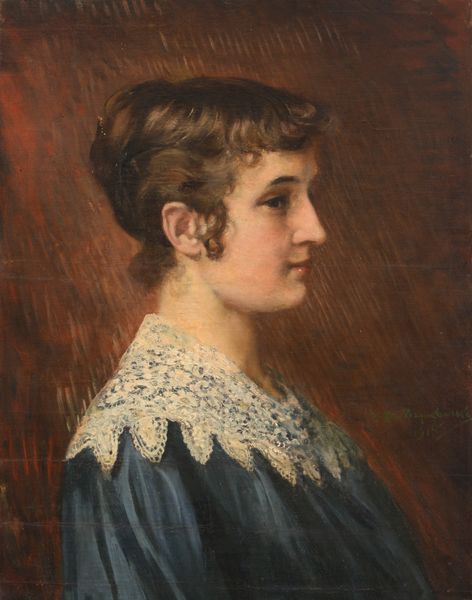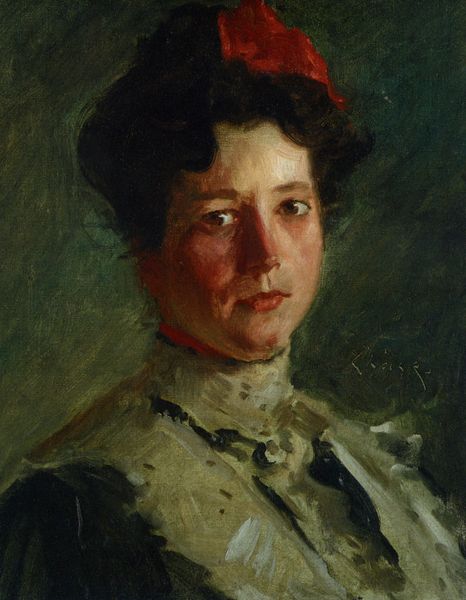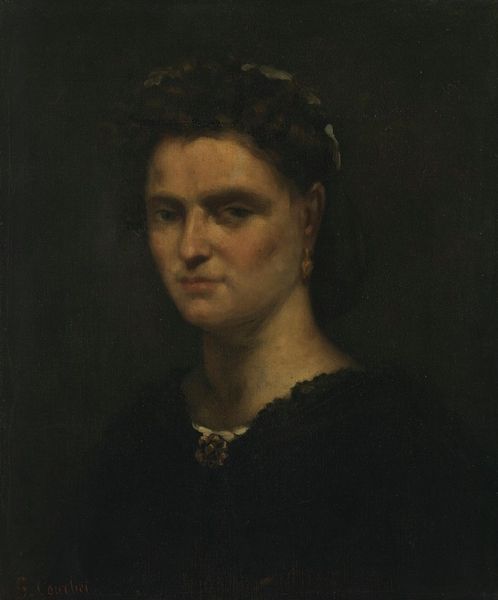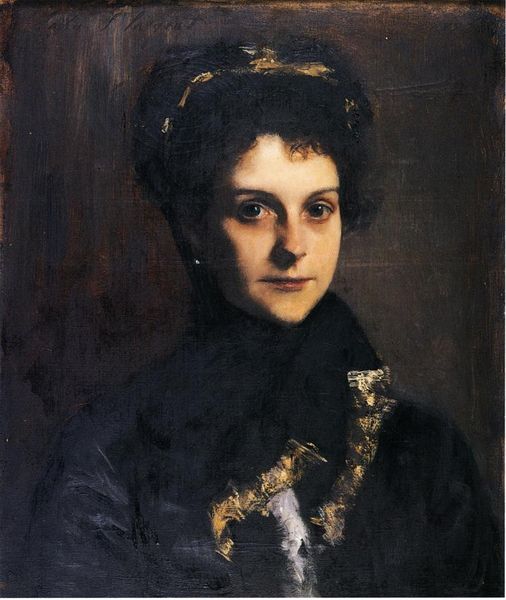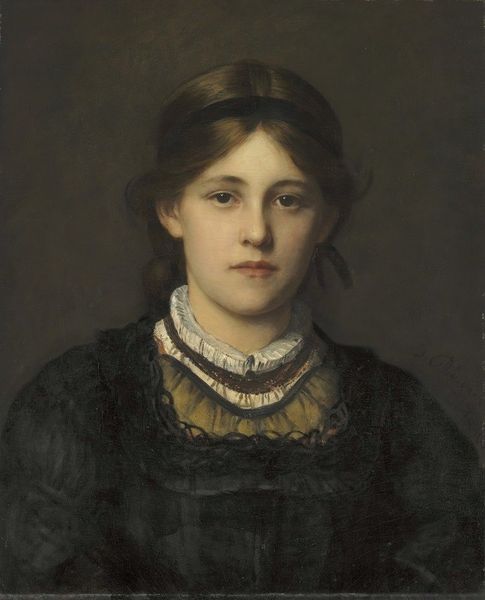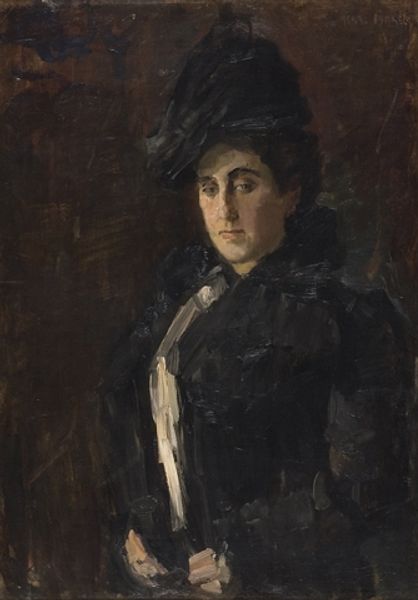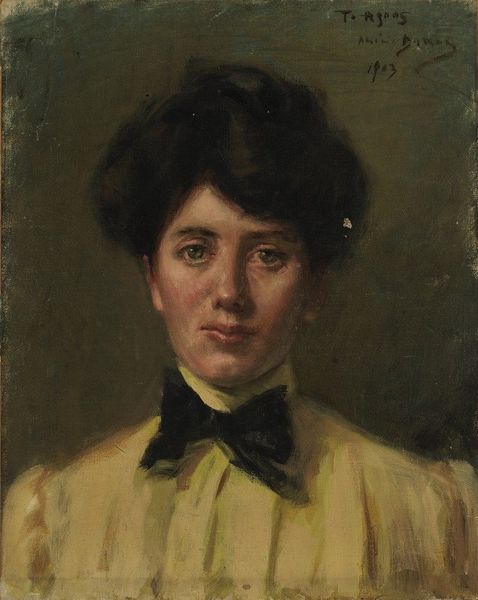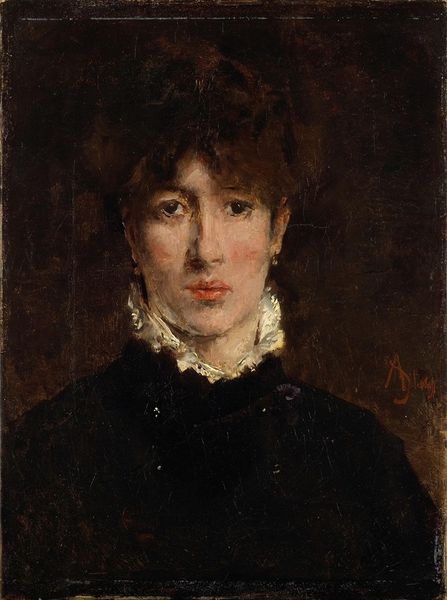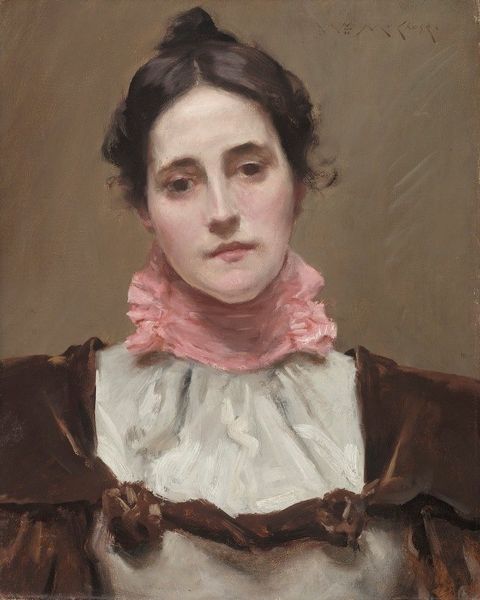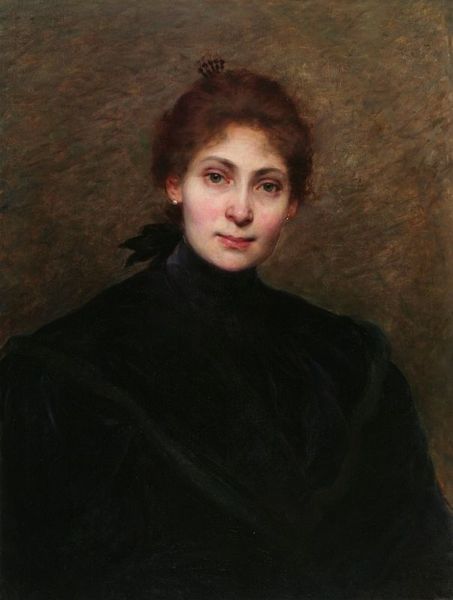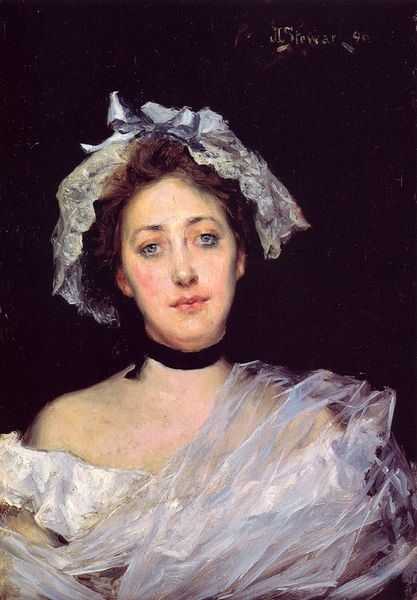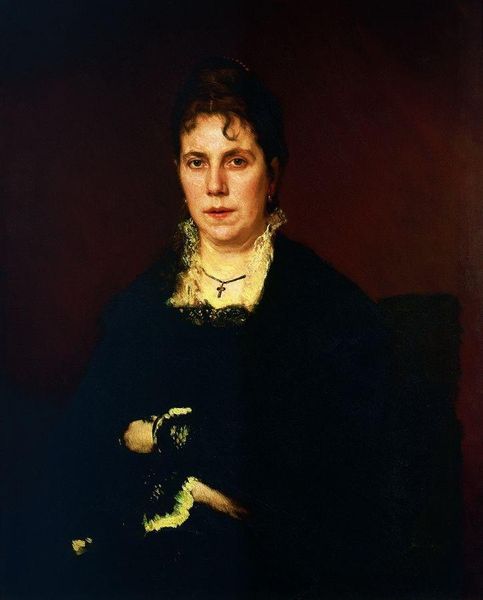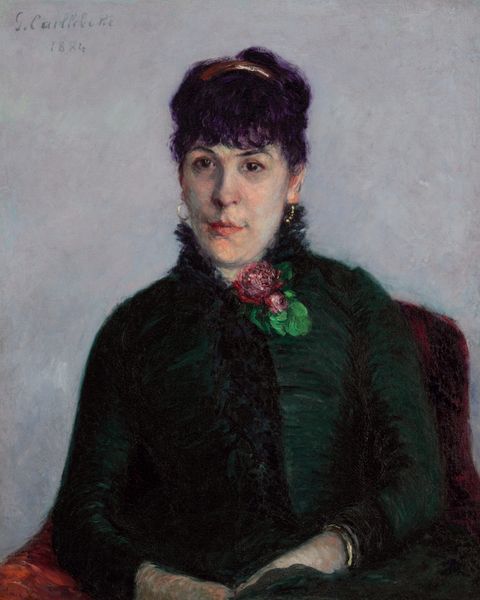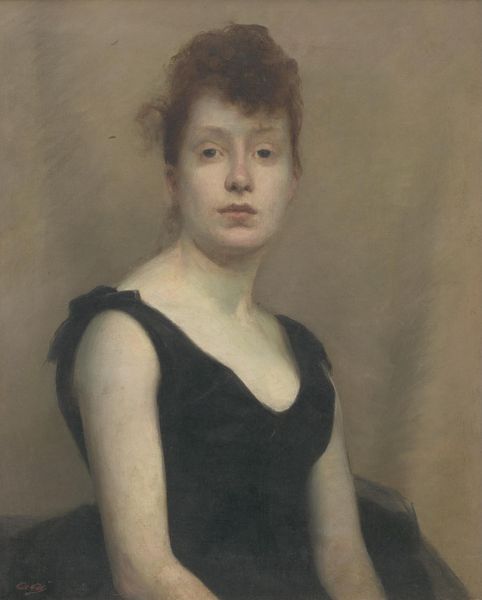
painting, oil-paint, impasto
#
portrait
#
self-portrait
#
portrait
#
painting
#
impressionism
#
oil-paint
#
figuration
#
impasto
#
intimism
#
realism
Dimensions: 54.6 x 43.2 cm
Copyright: Public domain
Editor: So here we have William Merritt Chase’s "Portrait of the Artist's Sister-in-Law," it’s undated but I see a certain looseness in the brushwork, a focus on the materiality of the oil paint itself that’s rather captivating. What jumps out at you about this particular portrait? Curator: I immediately look to the impasto technique, don’t you? Notice how Chase uses the materiality of the paint – thick daubs and strokes – not just to represent the subject, but to *become* the subject. How do you think the choice of oil paint influences our perception compared to, say, watercolor or pastel in a domestic portrait? Editor: That's interesting, I hadn't thought of the paint itself as holding that much weight. I guess a smoother, more blended material wouldn't convey the same immediate energy... it makes you consider the labor and time involved. Curator: Exactly! And think about the social context. Portraits were often commissions for the wealthy. How might Chase, by emphasizing the "work" of art-making through visible brushstrokes, be making a statement about art's status beyond mere commodity? Editor: So by showcasing the process, he's subverting traditional expectations of portraiture? The black dress and relative lack of embellishment also speak to a specific type of labor or social role, maybe not entirely within the leisured class? Curator: Precisely! It asks us to consider the sister-in-law not just as a subject of beauty, but also as an individual enmeshed in a network of social and material conditions. Is she participating in the burgeoning artistic circles of the time, and to what extend is her appearance related to an active involvement into arts and crafts production? How did her involvement contrast to a potential professional career, let's say, in medicine or law? Editor: That reframes the portrait for me completely, focusing more on her active role and the materials and modes of her involvement, rather than passive aesthetic appreciation. Thank you. Curator: It’s crucial to always reflect on not just *what* is represented, but *how* it is made and circulated, and the meanings created through that material process.
Comments
No comments
Be the first to comment and join the conversation on the ultimate creative platform.
